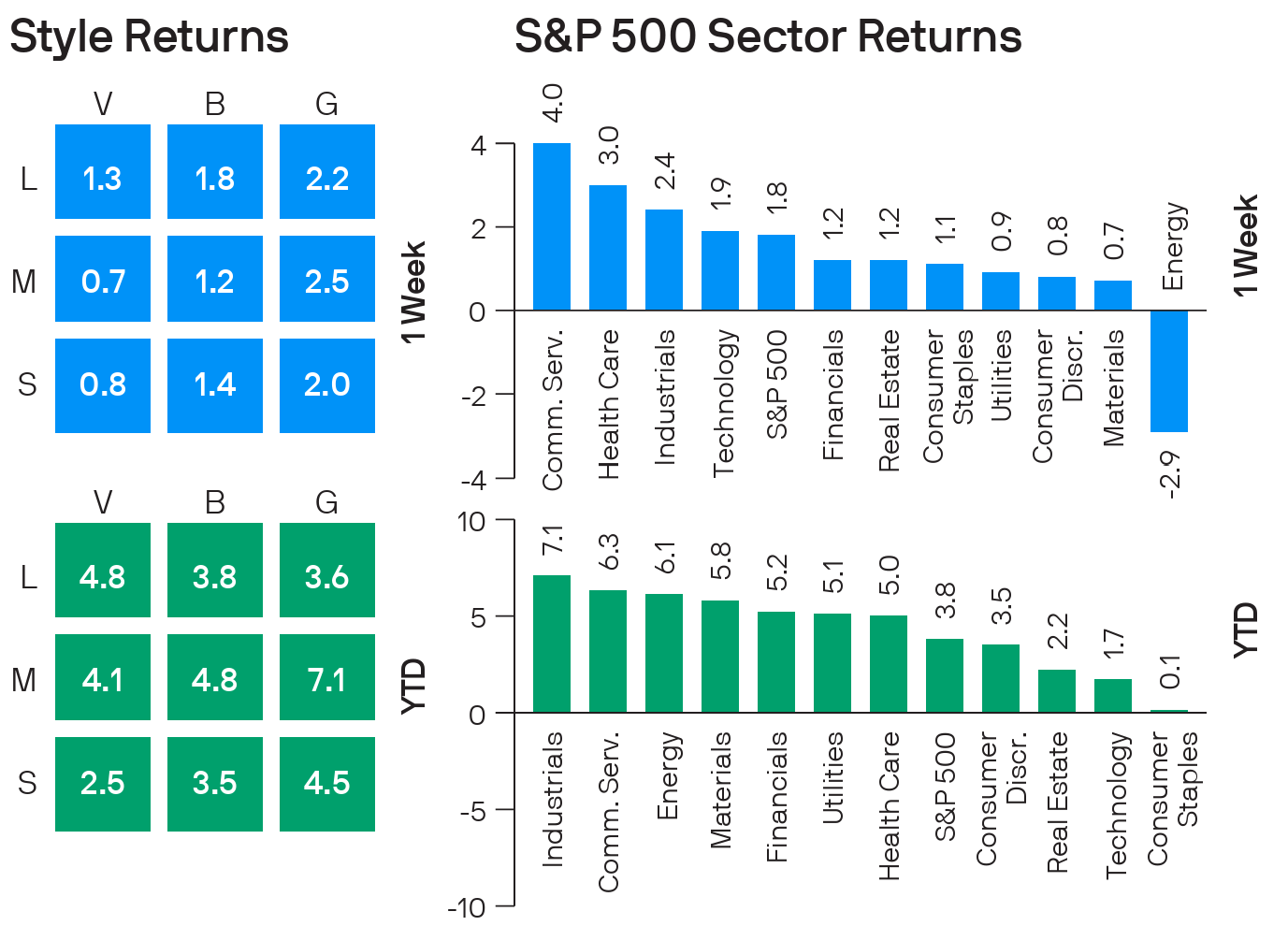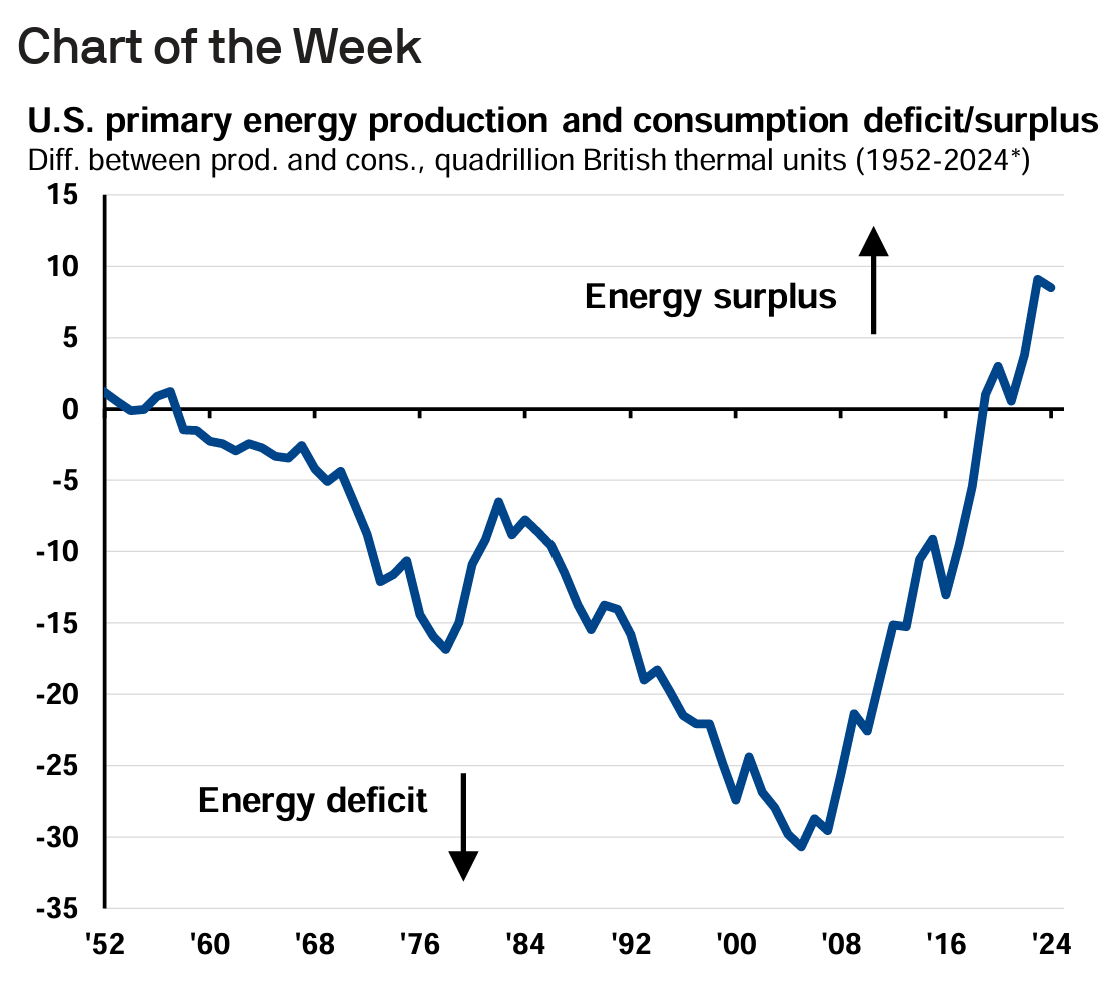
Market Update Week 4
Market Recap
Week of Jan. 20 - Jan.24, 2025
The S&P 500 index rose 1.7% this week, boosted by better-than-expected quarterly results and optimism that the Trump administration will reduce taxes and regulations.
The market benchmark ended Friday's session at 6,101.24. It reached a record intraday high of 6,128.18 on Friday but ended the session slightly below the record closing level of 6,118.71 posted on Thursday. The S&P 500 is now up 3.7% for the month and 25% from a year ago.
Sentiment was also boosted by stronger-than-expected quarterly earnings from companies including GE Aerospace (GE), Union Pacific (UNP) and Netflix (NFLX).
Energy was the lone decliner for the week, shedding 2.9% amid a drop in crude oil futures.
Shares of Halliburton (HAL) fell 7% as the company's Q4 adjusted earnings per share came in a penny above analysts' consensus estimate, but its revenue slightly missed the Street view.


Thought of the Week*
Immediately following his inauguration, President Trump signed a slew of executive orders (“EO”) and made several declarations related to major policy themes from his campaign, including boosting U.S. energy production. These EOs were aimed at deregulating oil drilling (“Drill baby, Drill”) and increasing energy supply. President Trump also declared a “National Energy Emergency” to help address the energy needs for AI and data center build-outs.
Despite the “energy emergency” claims, the U.S. is producing energy in record quantities. As shown in this week’s chart, the difference between primary energy production and consumption has reached the highest levels in recorded history. While these EOs may increase U.S. energy production going forward, the overall sector could continue to face performance challenges due to these supply/demand imbalances in energy markets.
The true impact of these EOs remains unknown. The U.S. is already the world’s largest crude oil producer and LNG exporter, producing 13.4 million barrels per day and aiming to increase LNG capacity by 50% in 2025 alone. It is unlikely that energy companies will want to significantly ramp up supply, resulting in a decrease in oil and gas prices and impacting profitability. For example, oil exploration and production firms need oil prices at ~$64 on average to profitably drill a new well, according to a2024 Dallas Fed survey, leaving little room for current prices to decline. Additionally, even deregulating Arctic drilling, a specific EO target, high costs have led oil drillers to shift more of their capital spending from this region toward process efficiency projects.
While the term “energy emergency” seems apocalyptic, the reality is investors probably do not have too much to worry about with energy markets.
*Source: J.P.Morgan Asset Management
Up Next
Economic data will include December new and pending home sales, Q1 gross domestic product and the December personal consumption expenditures price index, among other reports. Also, the Federal Open Market Committee will hold its first meeting of 2025.
All the Best,
Gordon Achtermann, CSRIC®, MBA, CFP®
Gordon@yourbestpathfp.com
703-573-7325
Your Best Path Financial Planning delivers comprehensive planning and investment management to families and individuals, whether you live in Fairfax, Virginia, Northern Virginia, or nationwide.

